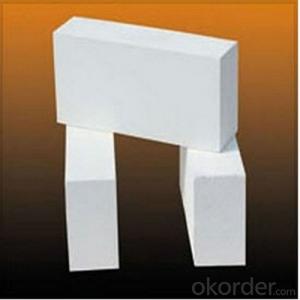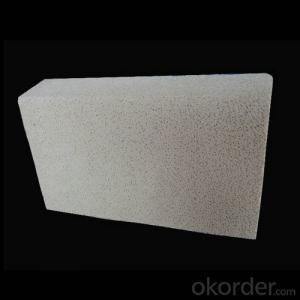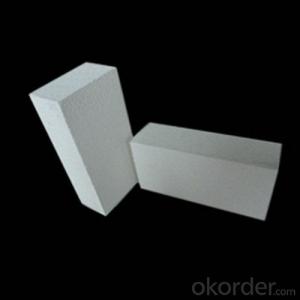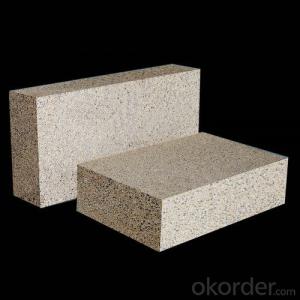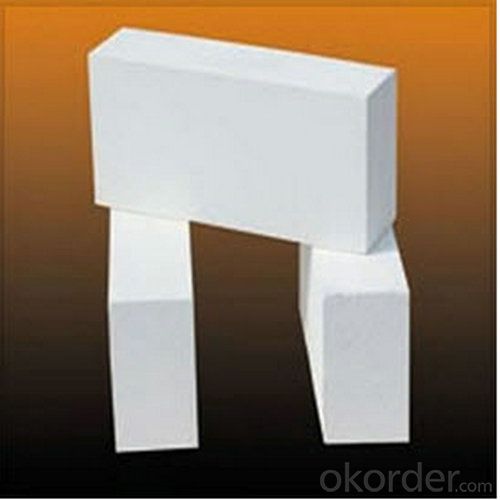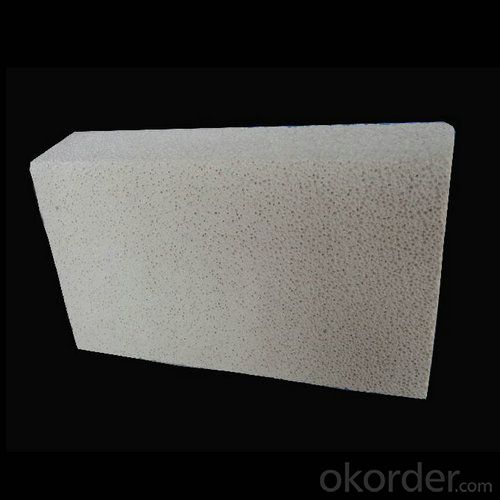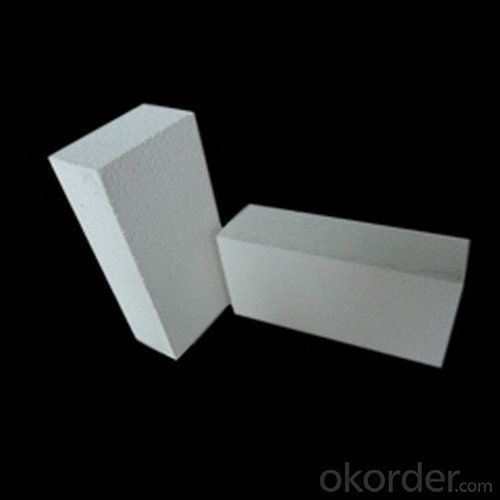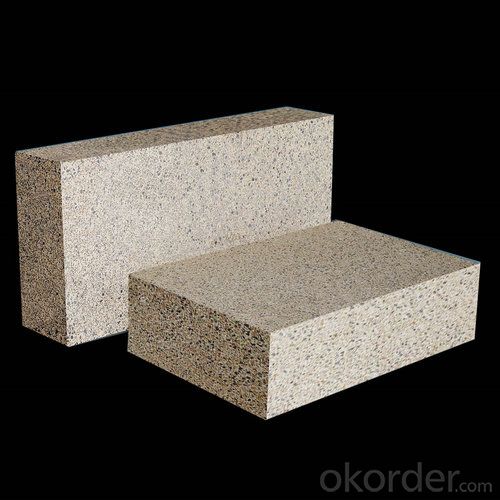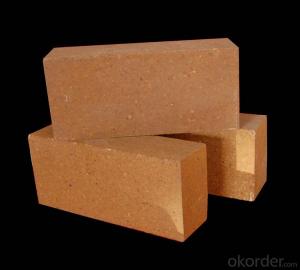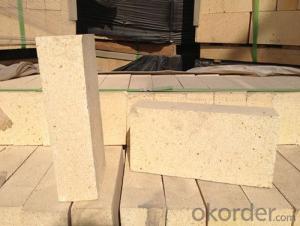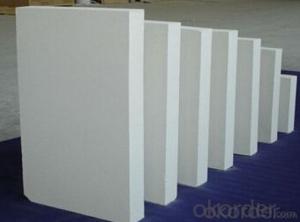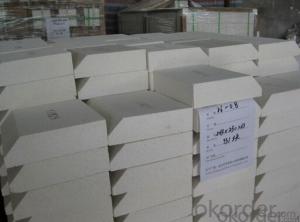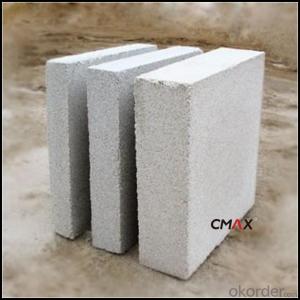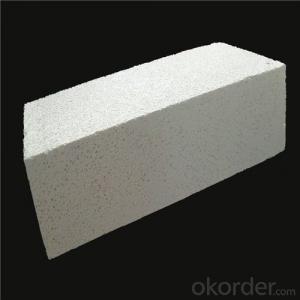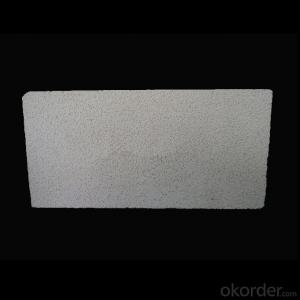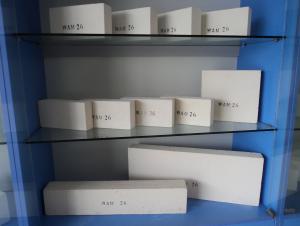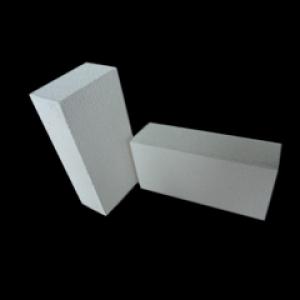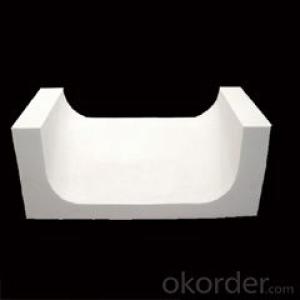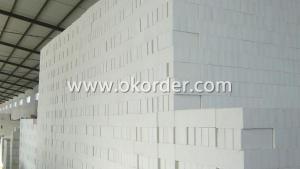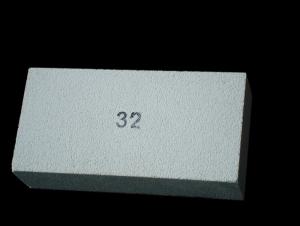High Thermal Shock Resistance Insulating Fire Brick
- Loading Port:
- Tianjin
- Payment Terms:
- TT OR LC
- Min Order Qty:
- 1 m.t.
- Supply Capability:
- 20000 m.t./month
OKorder Service Pledge
OKorder Financial Service
You Might Also Like
Description of Insulation Brick
CMAX Insulation Brick are classified under temperature between 1300℃ to 1700℃, manufactured from high purity alumina clay.
Features of Insulation Brick
Light weight and low thermal conductivity
Low heat storage
Low iron and impurities
High thermal shock resistance
Applications of Insulation Brick
CMAX Insulation Brick can be used as a hot face lining directly exposed to the heat or as a backup insulation layer in iron and steel mills, non-ferrous foundries, petrochemical, ceramic, glass.
Specifications of Insulation Brick
High Alumina Insulation Brick | ||||||
0.6 | 0.7 | 0.8 | 0.9 | 1.0 | 1.2 | |
Al2O3/% | ≥48 | ≥48 | ≥48 | ≥48 | ≥48 | ≥48 |
Fe2O3/% | ≤2 | ≤2 | ≤2 | ≤2 | ≤2 | ≤2 |
Bulk Density(g/cm3) | ≤0.6 | ≤0.7 | ≤0.8 | ≤0.9 | ≤1.0 | ≤1.2 |
Cold Crushing Strength Mpa | ≥2.0 | ≥2.5 | ≥2.9 | ≥3.4 | ≥3.9 | ≥5.00 |
Thermal Conductivity (350°C)W/m.K | ≤0.30 | ≤0.35 | ≤0.35 | ≤0.45 | ≤0.50 | ≤0.55 |
Reheating Linear Change less than 2.0% °C | 1350 | 1350 | 1400 | 1400 | 1400 | 1400 |
Images of Insulation Brick
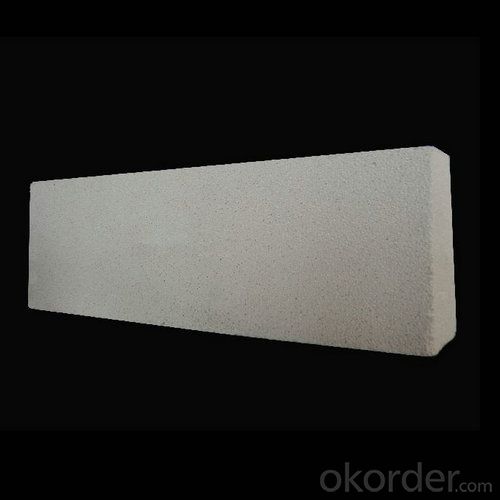
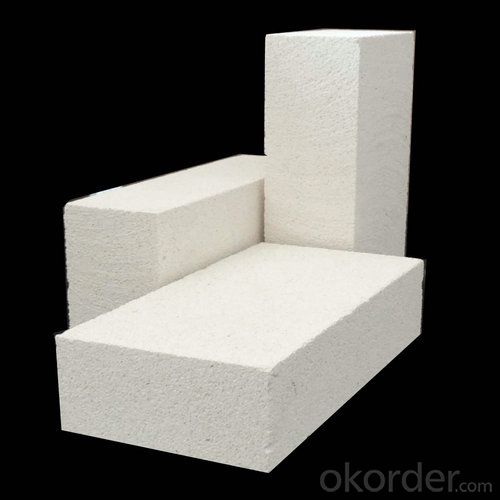
FAQ of Insulation Brick
1. Which products do you have?
We have all kinds of refractory brick, castable, mortar, cement, ceramic fiber products, etc.
Or you could browse our products to choose what you need.
2. Can you give me a general idea of the specification and technical data of your products?
CNBM offer a range of refractory and insulation products. We provide refractory bricks, monolithic refractories as well as ceramic fiber products. And On your given shapes, drawings or description, we are producing refractories with all sizes and shapes, resistant to temperature from 800 °C till 1800 °C, using various machines and equipments for cutting, grinding, drilling, polishing, shaping processes.
Every refractory product by CNBM is of superior quality. Lesser refractory products can not approach. CNBM utilizes proprietary testing methods, testing for chemical content, density, apparent porosity, cold crush strength and modulus of rapture. With stringent quality control, you can count on CNBM products to exceed refractory industry standards and your expectations.
3. Can you give me a brief introduction of the application of your products?
We are mainly specializing in the refractory materials in iron and steel, cement, glass, ceramics, petrochemical, electric power Industry, etc.
4. If I need your offer, what information do you need?
In order to choose suitable products, it will be appreciated to provide us the information, such us specification, technical data, order quantity, products application etc.
If any question, please contact us freely.
- Q: What are the specifications of high strength diatomite insulating bricks?
- In view of the old and new concrete, steel structure, solid brick wall, hollow brick wall, compressed air brick wall and different brick wall, combined with the company installation patent method, it is suitable for the construction and installation of various types of wall. At the same time, it is also suitable for old house reconstruction. It has excellent outdoor weather resistance, color retention, alkali resistance, water resistance, scrub resistance, crack resistance, temperature resistance, waterproof, wear-resistant, collision resistant, and durable film, adhesion, and excellent anti mildew effect.
- Q: Can insulating fire bricks be recycled?
- Yes, insulating fire bricks can be recycled. These bricks are often made from materials such as clay, shale, or kaolin, which can be crushed and reused to make new bricks. Additionally, some manufacturers offer recycling programs where old or damaged fire bricks can be returned and repurposed. Recycling insulating fire bricks is an environmentally-friendly solution that helps reduce waste and conserve resources.
- Q: Can insulating fire bricks be used in chemical processing plants?
- Yes, insulating fire bricks can be used in chemical processing plants. These bricks are designed to withstand high temperatures and provide excellent insulation, making them suitable for various industrial applications, including chemical processing. They can be used to line furnaces, kilns, reactors, and other equipment where temperature control and insulation are essential for efficient and safe operations in the chemical industry.
- Q: Is the quality of brick made of small-sized self insulation block equipment the same as that of large block brick equipment?
- Recently, a lot of people have encountered this problem, Silver Horse understand, in fact, the brick machine is only the production of different production, the quality of the bricks produced are the same.
- Q: Can insulating fire bricks be used in textile industry kilns?
- Yes, insulating fire bricks can be used in textile industry kilns. These bricks are designed to withstand high temperatures and provide excellent insulation, making them suitable for use in kilns where textiles are processed or treated. Insulating fire bricks help maintain consistent temperatures, enhance energy efficiency, and protect the kiln from heat damage.
- Q: Are insulating fire bricks resistant to thermal spalling?
- Yes, insulating fire bricks are resistant to thermal spalling.
- Q: Can insulating fire bricks be used for insulation in steam boilers?
- Yes, insulating fire bricks can be used for insulation in steam boilers. These bricks are specifically designed to withstand high temperatures and provide excellent thermal insulation properties. They help to reduce heat loss and improve the overall energy efficiency of the steam boiler system.
- Q: Can insulating fire bricks be used in the construction of radiant tubes?
- Yes, insulating fire bricks can be used in the construction of radiant tubes. These bricks are designed to have low thermal conductivity, which makes them an excellent choice for insulating applications such as radiant tubes. They can help to minimize heat loss and improve the efficiency of the radiant heating system.
- Q: Can insulating fire bricks be used in rocket stove designs?
- Yes, insulating fire bricks can be used in rocket stove designs. Rocket stoves are known for their efficient combustion and heat transfer, and insulating fire bricks can enhance this performance. These bricks are made from lightweight materials that have high insulating properties, allowing them to retain and reflect heat efficiently. In a rocket stove, the combustion chamber is typically lined with insulating fire bricks to maximize the heat transfer to the cooking surface or space being heated. The bricks help to retain heat within the combustion chamber, ensuring that more of the energy from the burning fuel is used to heat the cooking surface rather than being lost to the environment. Additionally, insulating fire bricks can withstand high temperatures, making them ideal for rocket stove designs. They are designed to handle the intense heat produced by the combustion process, ensuring the bricks won't crack or break under these conditions. Overall, using insulating fire bricks in rocket stove designs can improve the stove's efficiency and heat transfer, resulting in a more effective and sustainable cooking or heating solution.
- Q: Can insulating fire bricks be used in the construction of thermal insulation floors?
- Insulating fire bricks are indeed suitable for the construction of thermal insulation floors. These bricks are specifically designed to possess low thermal conductivity, enabling them to effectively impede heat transfer. Consequently, they are an excellent selection for thermal insulation purposes, including floors. The utilization of insulating fire bricks in the construction of thermal insulation floors can greatly decrease heat loss from the floor, resulting in enhanced energy efficiency and cost savings. Furthermore, these bricks are lightweight and easy to install, making them a practical option for construction projects. All in all, insulating fire bricks offer a suitable and effective means of incorporating thermal insulation into floors.
Send your message to us
High Thermal Shock Resistance Insulating Fire Brick
- Loading Port:
- Tianjin
- Payment Terms:
- TT OR LC
- Min Order Qty:
- 1 m.t.
- Supply Capability:
- 20000 m.t./month
OKorder Service Pledge
OKorder Financial Service
Similar products
Hot products
Hot Searches
Related keywords
